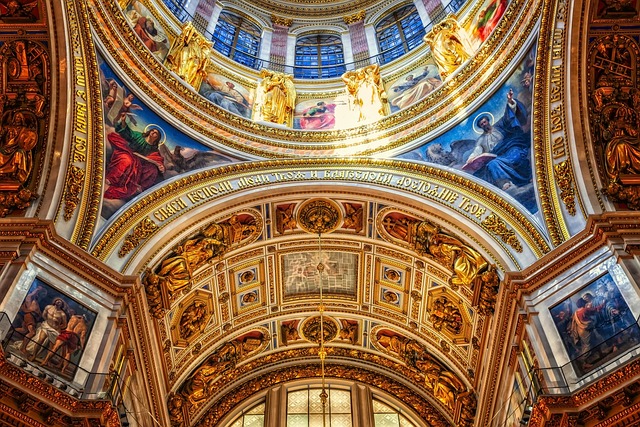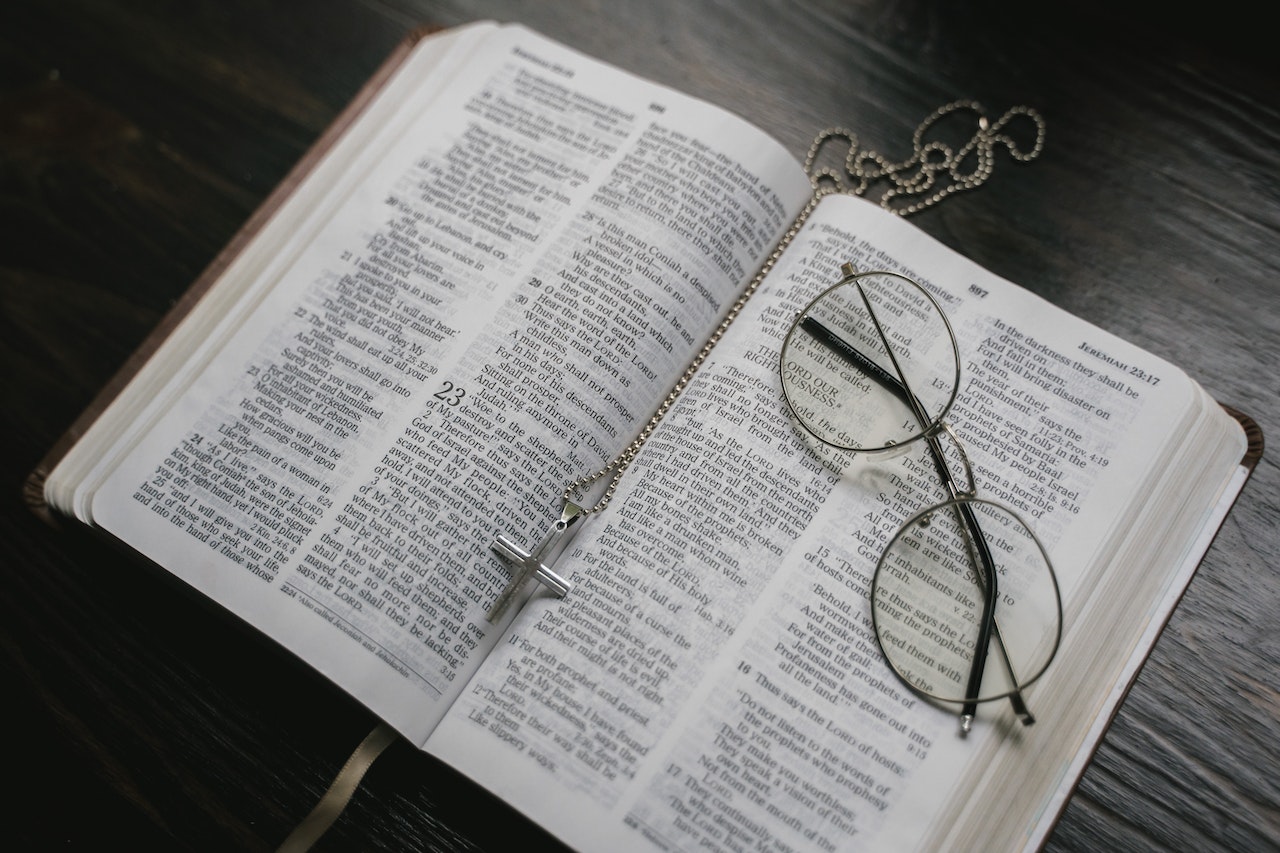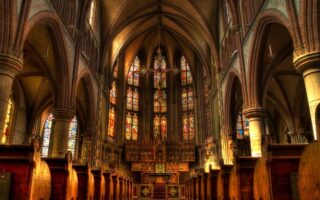Orthodox prayer is an essential aspect of the Orthodox Christian faith. It is a deeply spiritual practice that involves both personal and communal prayer. Orthodox Christians believe that prayer is a means of connecting with God and seeking His guidance, mercy, and grace. This introduction provides a brief overview of how Orthodox Christians pray.
Table of Contents
The Significance of Icons in Orthodox Prayer
Orthodox prayer is a central aspect of the Orthodox Christian faith. It is a way for believers to communicate with God, seek His guidance, and express their love and devotion. One significant element of Orthodox prayer is the use of icons, which play a crucial role in the spiritual journey of Orthodox Christians.
Icons are sacred images that depict Christ, the Virgin Mary, saints, and biblical events. They are not mere decorations but are considered windows to the divine. Icons are believed to be a means of connecting with the spiritual realm and are venerated as a way to honor and show respect to the holy figures they represent.
When Orthodox Christians pray, they often do so in front of an icon. The presence of the icon serves as a reminder of the spiritual reality and helps believers focus their thoughts and intentions. Icons are seen as a tangible representation of the divine, and through them, Orthodox Christians believe they can establish a connection with God and the saints.
The act of praying in front of an icon is not idolatry, as some may mistakenly assume. Orthodox Christians do not worship the icons themselves but rather use them as aids in their worship of God. Icons are seen as windows to the divine, allowing believers to glimpse the heavenly realm and draw closer to God.
The use of icons in Orthodox prayer is deeply rooted in tradition and has been practiced for centuries. The veneration of icons can be traced back to the early days of Christianity when believers would gather in secret catacombs to worship and pray. These early Christians would often use symbols and images to express their faith, as they were unable to openly display their devotion due to persecution.
Icons serve as a visual representation of the invisible reality of God’s presence. They are believed to be imbued with the grace and power of the holy figures they depict. When Orthodox Christians pray in front of an icon, they believe that the saints and angels depicted in the image are present and interceding on their behalf.
The significance of icons in Orthodox prayer goes beyond their visual representation. Icons are often adorned with gold leaf, vibrant colors, and intricate details, all of which serve to enhance the spiritual experience of the believer. The beauty of the icon is seen as a reflection of the divine beauty and a glimpse into the heavenly realm.
Orthodox Christians also use icons as aids in their personal prayer life. Many believers have a personal icon corner in their homes, where they can retreat for quiet prayer and reflection. This dedicated space serves as a reminder of the importance of prayer and provides a peaceful environment for communion with God.
In conclusion, icons hold great significance in Orthodox prayer. They are not objects of worship but rather aids in the worship of God. Icons serve as windows to the divine, allowing believers to connect with the spiritual realm and draw closer to God. The use of icons in Orthodox prayer is deeply rooted in tradition and has been practiced for centuries. They are seen as tangible representations of the invisible reality of God’s presence and are venerated as a way to honor and show respect to the holy figures they depict. Icons enhance the spiritual experience of believers and serve as a reminder of the importance of prayer in the Orthodox Christian faith.
The Role of Chanting and Incense in Orthodox Prayer

Orthodox prayer is a beautiful and integral part of the Orthodox Christian tradition. It is a way for believers to connect with God and seek His guidance and blessings. One of the unique aspects of Orthodox prayer is the use of chanting and incense, which play a significant role in enhancing the spiritual experience.
Chanting is a form of singing that is specific to Orthodox worship. It involves the repetition of prayers and hymns in a melodic and rhythmic manner. The purpose of chanting is to create a meditative and contemplative atmosphere that helps the faithful focus their minds and hearts on God. The melodic tunes and harmonies of the chants have a soothing effect on the soul, allowing worshippers to enter into a state of deep prayer and communion with God.
The use of incense in Orthodox prayer is also deeply symbolic. Incense is made from aromatic resins and herbs, which are burned in a censer during worship. As the smoke rises, it symbolizes the prayers of the faithful ascending to heaven. The sweet fragrance of the incense fills the church, creating a sensory experience that enhances the spiritual atmosphere. The scent of incense is often associated with holiness and purity, and it helps to create a sacred space where believers can feel the presence of God.
In addition to their symbolic significance, both chanting and incense have practical benefits in Orthodox prayer. Chanting helps to regulate the breath and deepen the voice, which aids in the proper pronunciation of the prayers. It also helps to create a sense of unity among the worshippers, as they all join together in singing the same hymns and prayers. The repetitive nature of chanting allows the words to sink deep into the heart, making them more meaningful and impactful.
Similarly, the use of incense has a practical purpose as well. The smoke from the incense helps to purify the air and create a sense of reverence and awe. It also acts as a natural insect repellent, ensuring that the worship space remains clean and free from distractions. The visual and olfactory stimulation provided by the incense helps to engage the senses and focus the mind on prayer.
Both chanting and incense are deeply rooted in the ancient traditions of the Orthodox Church. They have been used for centuries as a means of worship and spiritual connection. The melodies and chants have been passed down from generation to generation, preserving the rich musical heritage of the Church. Similarly, the use of incense can be traced back to the Old Testament, where it was used in the worship of God.
In conclusion, chanting and incense play a vital role in Orthodox prayer. They enhance the spiritual experience, create a sense of reverence, and help to focus the mind and heart on God. The melodic tunes and harmonies of the chants, along with the sweet fragrance of the incense, create a sensory experience that engages the senses and deepens the prayerful experience. Whether it is the repetitive nature of chanting or the symbolic significance of incense, these elements contribute to the beauty and richness of Orthodox prayer. So, the next time you attend an Orthodox service, take a moment to appreciate the power and significance of chanting and incense in connecting with God.
The Importance of Posture and Gestures in Orthodox Prayer
Orthodox prayer is a deeply spiritual practice that encompasses not only words but also posture and gestures. These physical aspects play a crucial role in connecting the worshipper with God and creating a sense of reverence and humility. In this article, we will explore the importance of posture and gestures in Orthodox prayer and how they contribute to the overall spiritual experience.
When entering an Orthodox church, one immediately notices the emphasis on physicality in prayer. The faithful stand, kneel, bow, and make the sign of the cross throughout the service. These actions are not mere rituals but are deeply rooted in the Orthodox tradition and theology.
The first and most common gesture in Orthodox prayer is the sign of the cross. This simple yet powerful movement involves touching the forehead, chest, and both shoulders while saying, “In the name of the Father, and of the Son, and of the Holy Spirit, Amen.” The sign of the cross is a visible expression of faith and a reminder of the Holy Trinity. It is performed at the beginning and end of prayers, during the Divine Liturgy, and at various other moments during the service.
Another important aspect of Orthodox prayer is standing. The faithful stand during most of the service, symbolizing their readiness to encounter God and their willingness to listen and respond to His word. Standing also signifies respect and attentiveness, as one stands before a king or a judge. By standing, Orthodox Christians demonstrate their reverence for God and their desire to be in His presence.
Kneeling is another posture commonly observed in Orthodox prayer. It is a sign of humility and submission before God. Kneeling is often practiced during specific prayers, such as the prayer of repentance or during the consecration of the Eucharist. By humbling themselves before God, the faithful acknowledge their unworthiness and their need for His mercy and forgiveness.
Bowing is yet another physical gesture that holds great significance in Orthodox prayer. It is a way of showing respect and honor to God and His saints. Bowing can be a simple inclination of the head or a profound bow from the waist. It is often accompanied by the sign of the cross and is performed during certain prayers, when venerating icons, or when receiving a blessing from a priest or bishop.
The physicality of Orthodox prayer serves as a reminder that our bodies are not separate from our spiritual lives. By engaging our bodies in prayer, we involve our whole being in the act of worship. This holistic approach to prayer helps us to focus our minds, quiet our hearts, and open ourselves to the presence of God.
In conclusion, the importance of posture and gestures in Orthodox prayer cannot be overstated. These physical actions are not empty rituals but are deeply rooted in the Orthodox tradition and theology. The sign of the cross, standing, kneeling, and bowing all contribute to the overall spiritual experience, helping the faithful to connect with God, express their faith, and cultivate a sense of reverence and humility. So, the next time you find yourself in an Orthodox church, pay attention to these physical aspects of prayer and allow them to enhance your own spiritual journey.
Exploring the Jesus Prayer in Orthodox Tradition
Orthodox Christianity is a rich and ancient tradition that encompasses a wide range of practices and beliefs. One of the most important aspects of Orthodox worship is prayer. Prayer is seen as a way to connect with God and seek His guidance and blessings. In the Orthodox tradition, there are various forms of prayer, but one of the most well-known and widely practiced is the Jesus Prayer.
The Jesus Prayer is a simple yet profound prayer that is repeated over and over again. It goes like this: “Lord Jesus Christ, Son of God, have mercy on me, a sinner.” This prayer is based on the words of the tax collector in the parable of the Pharisee and the tax collector in the Gospel of Luke. The tax collector, recognizing his own sinfulness, humbly prayed, “God, be merciful to me, a sinner.”
The Jesus Prayer is often recited using a prayer rope, which is a string of knots or beads. Each knot or bead represents a repetition of the prayer. The prayer rope helps to keep track of the number of times the prayer is said and also serves as a physical reminder of the presence of God. As the person prays, they focus their attention on the words of the prayer and try to empty their mind of distractions.
The Jesus Prayer is not just a repetition of words; it is a way of opening oneself up to God’s presence and seeking His mercy. It is a prayer of repentance and humility, acknowledging our own sinfulness and our need for God’s forgiveness. By repeating the prayer, we are reminded of our dependence on God and our desire to be in communion with Him.
In Orthodox tradition, the Jesus Prayer is often said in conjunction with the use of the prayer rope. The person praying will hold the prayer rope in their hand and move from one knot or bead to the next as they repeat the prayer. This physical movement helps to engage the body in the act of prayer and can be a helpful aid in focusing the mind.
The Jesus Prayer can be said at any time and in any place. It can be said silently or aloud, depending on the preference of the individual. Some people find it helpful to set aside a specific time each day for prayer, while others incorporate the Jesus Prayer into their daily activities, saying it as they go about their tasks.
The Jesus Prayer is not meant to be a magical formula or a way to manipulate God. It is a way of opening ourselves up to God’s presence and seeking His mercy. It is a prayer of surrender and trust, acknowledging that we are not in control and that we need God’s help and guidance.
In the Orthodox tradition, the Jesus Prayer is seen as a way to cultivate a deeper relationship with God and to grow in holiness. It is a prayer that can be said by anyone, regardless of their level of spiritual maturity or knowledge. It is a prayer that can be said by the young and the old, the educated and the uneducated, the rich and the poor.
The Jesus Prayer is a powerful tool for spiritual growth and transformation. It is a prayer that can bring comfort and peace in times of trouble, and it can also be a source of inspiration and strength. By repeating the prayer, we are reminded of God’s love and mercy, and we are drawn closer to Him. So, whether you are new to Orthodox Christianity or have been practicing for years, consider incorporating the Jesus Prayer into your daily life and experience the transformative power of this ancient prayer.
Conclusion
In conclusion, Orthodox prayer is characterized by its emphasis on tradition, liturgy, and reverence. It involves various postures, such as standing, kneeling, and prostrating, as well as the use of icons, incense, and repetitive prayers. Orthodox Christians believe that prayer connects them with God and the saints, and it is seen as a vital part of their spiritual journey.
For licensing reasons, we must provide the following notice: This content was created in part with the help of an AI.


